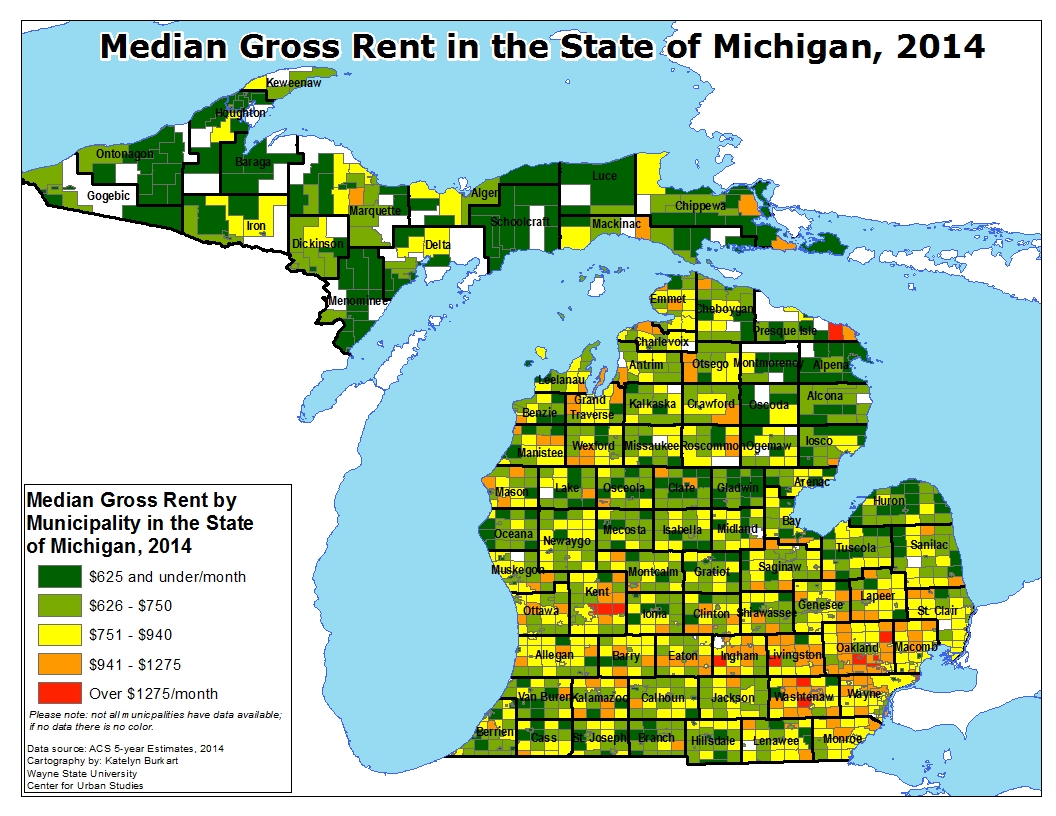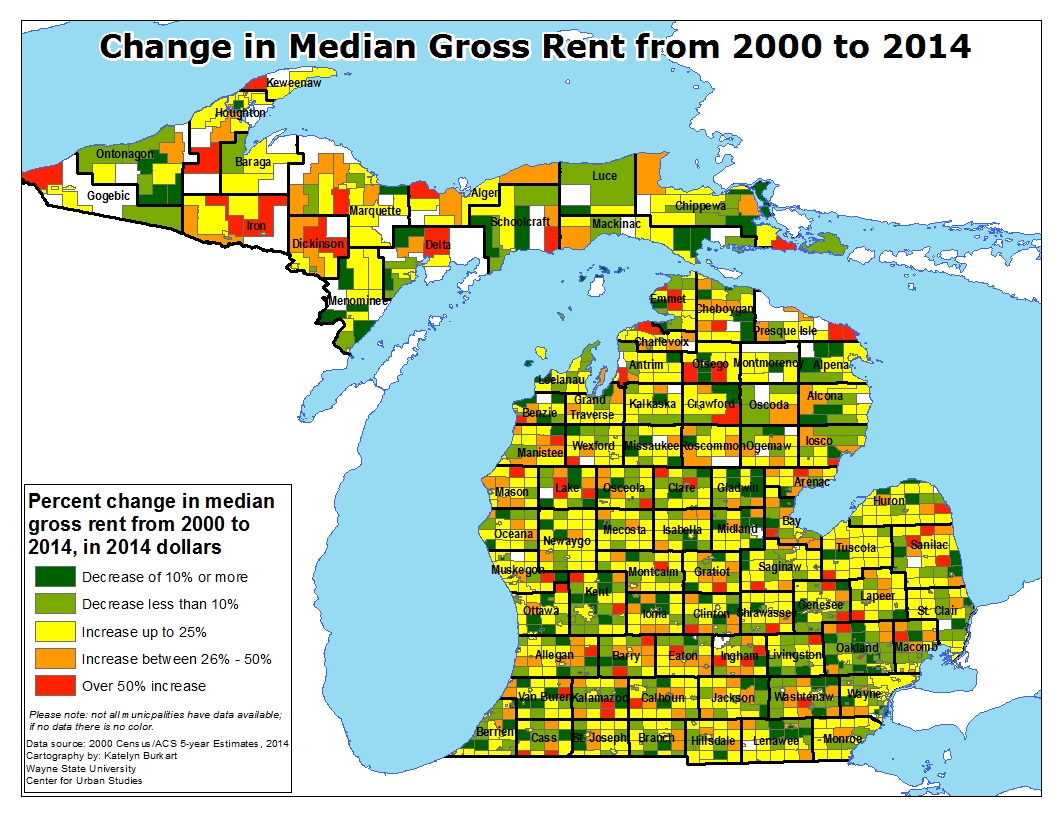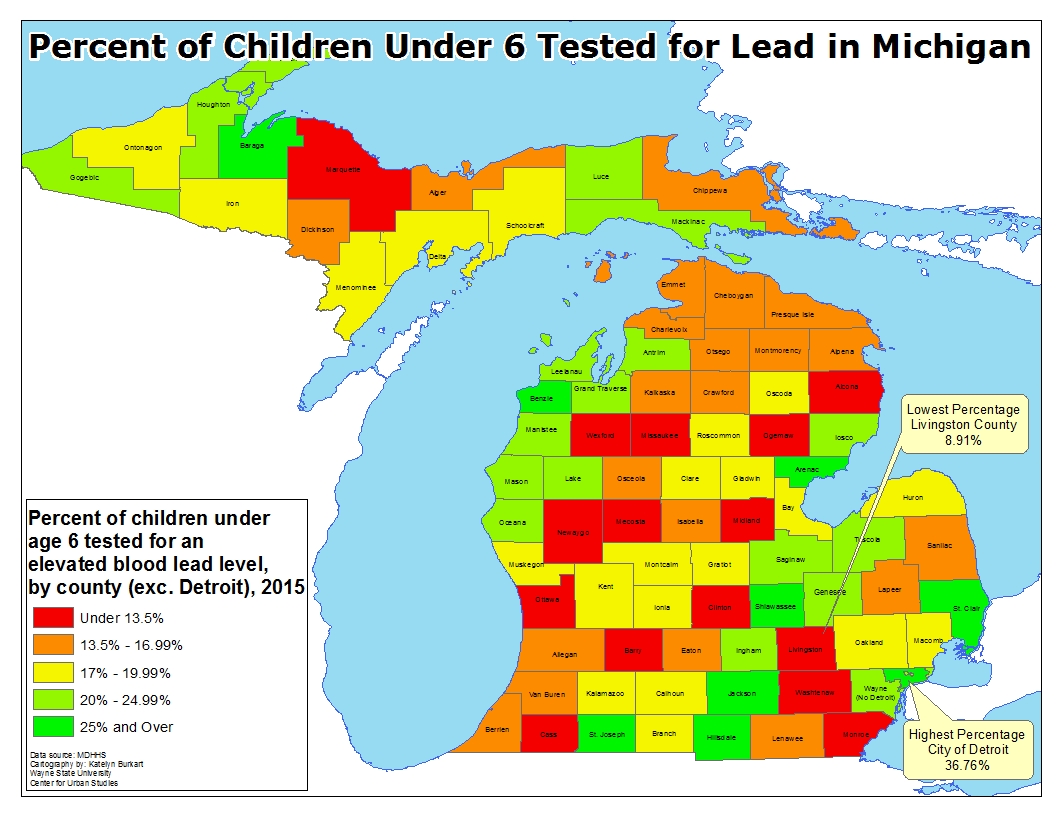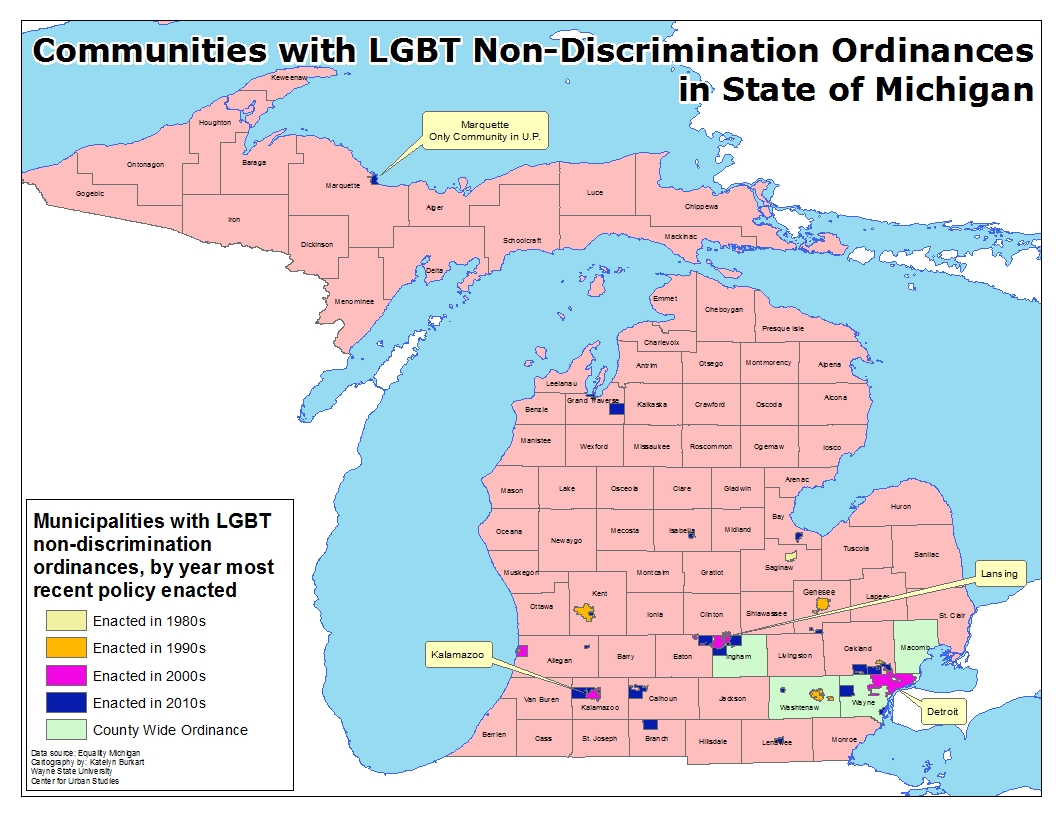In 2014 there were 122 different communities in the state of Michigan with gross median rental costs above $1,000; Bloomfield Hills topped this list with a gross median rent price of $2,001. Despite this community being at the top of the median gross rental cost list for the state it experienced a 5 percent median rental price decrease between 2000 and 2014. On the opposite end of the spectrum, in 2014 there were 72 different Michigan communities with median gross rental prices under $500 a month; Rose City in Ogemaw County had the lowest gross median rental cost at $294 per month. Like Bloomfield Hills, Rose City also experienced a decrease in its median gross rental cost between 2000 and 2014. However, for Rose City that decrease was much greater; there was a 50 percent median gross rental cost decrease between 2000 and 2014.
On a national basis, in 2014 the gross median rental cost was $920 and 41 percent of rental units throughout the U.S. had a gross median rental price above $1,000; 12.1 percent of the rental units in the U.S. had gross median rental costs below $500.
For this post, data from the year 2000 is from the decennial census while the 2014 data is from the 5 year American Community Survey. Additionally, when comparing gross median rent data between 2000 and 2014 (as seen in the second map) the 2000 rent prices were adjusted to reflect 2014 dollars so a more accurate reflection of the changes could be presented.
Gross rent is defined as the monthly amount of rent plus the estimated amount of utilities and fuel.
The map above shows the range of median gross rental costs throughout the state of Michigan in 2014. Looking at the highest bound of rents–$1,275 and there were 20 communities throughout the state, 13 of which were located in Southeastern Michigan and seven of which were located in Oakland County. Of those in the region, two were located in Wayne County-Grosse Pointe Shores and Grosse Pointe Farms. As noted, there were over 100 communities with gross rental prices above $1,000 in Michigan in 2014.
Regionally, there were also five communities on the lower end of the spectrum, with gross median rental costs below $625. The city of Highland Park was the only one located in Wayne County, with a gross median rent of $624. The city of Center Line had the lowest gross median rental cost in the region at $492.
The city of Detroit had a gross median rental cost of $756 in 2014. This was in the 42 percentile of gross median rental prices throughout the state. Detroit’s gross median rental cost was higher than more than 50 percent of the other communities in the state.
In total, there were 80 Michigan communities with gross median rental price increases above 50 percent between 2000 and 2014 (These are the communities for which there was full data for comparison). Of those 80 communities, four were located in the Southeastern Michigan region, two of which were located in Oakland County. Of those communities, Orchard Lake Township had the highest percentage change in gross median rent at 117 percent. In 2014 the gross median rent in the township was $1,909 and in 2000 (in adjusted 2014 numbers) the gross median rent was $879 ($635 in 2000 dollars).
Cross Village Township in Emmett County had the largest overall gross median rental cost increase between 2000 and 2014 (in 2014 dollars) at 132 percent. In 2014 the gross median rental price in the township was $915 while in 2000 the price (in 2014 dollars) was $415 (equivalent to $300 in non-adjusted 2000 dollars). It should be noted though that this Lake Michigan town had a population of 294 in 2014, meaning that a small number of large increases in rent could produce the large reported change in the median.
Of the 27 communities in Michigan with a decrease in gross median rental costs between 2000 and 2014 for which full data was available for comparison, only two were located in Southeastern Michigan. These communities-Rose and Sylvan Lake townships in Oakland County and Deerfield Township in Livingston County-experienced rental rate decreases at 1.5 percent, 2.7 percent and 25 percent, respectively.
Between 2000 and 2014 the city of Detroit’s gross median rental cost increased by 12 percent. Detroit’s gross median rental cost increase was higher than about 70 percent of the other Michigan communities between 2000 and 2014 (when comparing in 2014 dollars). While not depicted in either of the maps, it was reported on July 23 2016 by the Detroit News that the housing market in Downtown Detroit continues to soar, with average rents increasing more that 11 percent since 2011 in that area of the city. According to the article, the average monthly rent for a one bedroom apartment in Downtown Detroit is $1,359.
Overall, about 65 percent of the state’s cities or townships had gross median rental cost increases between 2000 and 2014, when dollars were adjusted for comparison. Various reasons may explain the overall increase in gross median rental costs (in comparable dollars) throughout the state, the most likely of which is greater demand. The 2008-2009 recession produced a large uptick in foreclosures, nationally and throughout the state. With this, many people were left looking for affordable rental units. With an increase in demand comes an increase in price. In a future post we will discuss the overall change in rental rates throughout Southeastern Michigan between 2000, 2010 and 2014, but according to the U.S. Census Bureau we do know that on a national basis the recession produced a greater demand in rental units. Since gross median rent also includes the estimated cost of utilities and fuel, increases in energy costs overtime are also likely contributors to the overall increase.










